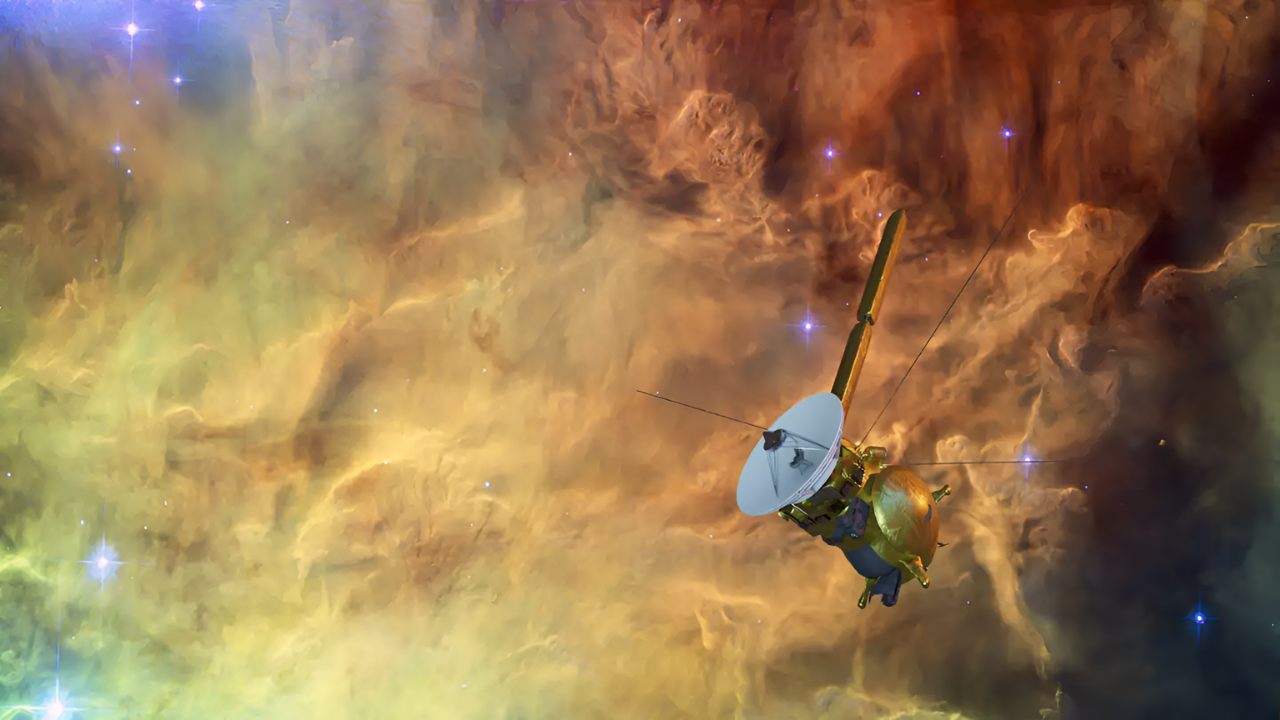
In 1977, NASA launched the Voyager 1 and its twin probe, Voyager 2, during a rare planetary alignment that occurs only once every 175 years. The spacecraft used gravity assists from Jupiter and Saturn to accelerate across the solar system.
Voyager 1 traveled faster than its twin, eventually reaching a speed of 38,000 miles per hour. By November 2025, it had traveled 15.7 billion miles from Earth, with radio signals taking nearly a full day for round-trip communication.
The probe carries a golden record—a time capsule of Earth’s sounds, images, and greetings. On August 25, 2012, Voyager 1 made history. At 121 astronomical units from the Sun, the spacecraft’s sensors detected dramatic changes: electron density increased 80-fold and cosmic rays from distant supernovas surged.
Temperature readings climbed to between 30,000 and 50,000 Kelvin (roughly 54,000 to 90,000 degrees Fahrenheit). These changes proved Voyager 1 had crossed the heliopause—the invisible boundary where the Sun’s wind collides with interstellar gas. Scientists refer to this scorching boundary as the “wall of fire.”
Voyager 1 became the first human-made object to enter interstellar space at roughly 122 astronomical units. Beyond lies the vast Oort Cloud, a region of icy comets extending to 100,000 astronomical units away.
WHY VOYAGER 1 SURVIVED EXTREME TEMPERATURES

Despite soaring to 54,000 degrees Fahrenheit, Voyager 1 survived unscathed. Although the plasma near the heliopause is incredibly hot, its particle density is so low that almost no heat transfers to the spacecraft. In space’s near-vacuum, heat cannot travel efficiently through thin gas.
This keeps Voyager 1’s systems functioning after nearly 50 years. Beyond the heliopause, Voyager 1 faces new dangers: galactic cosmic rays—high-energy particles from supernovas and distant galaxies. Earth’s atmosphere and the Sun’s magnetic field shield us from this lethal radiation.
Voyager 1 has no such protection. Engineers designed the spacecraft with robust shielding to withstand this barrage. Scientists expected to see dramatic magnetic field changes at the heliopause, but instead the field remained largely parallel on both sides. This surprise contradicted existing models of how the solar system ends. The heliopause itself is not fixed.
It expands and contracts over the Sun’s 11-year activity cycle as solar wind pressure fluctuates. When Voyager 2 crossed the heliopause in November 2018 at 119 astronomical units—two units closer than Voyager 1—this proved the boundary moves constantly.
A RACE AGAINST TIME

Voyager 1 now faces a race against time as its power dwindles. NASA powered both Voyagers with plutonium-238, a radioactive fuel that decays steadily. By 2022, Voyager 1’s power output had dropped to just 220 watts, forcing engineers to shut down nonessential instruments and manage remaining resources carefully.
The spacecraft’s computer operates with only 69 kilobytes of memory—roughly one millionth of the storage capacity of a modern smartphone. This ancient computer has weathered system failures and data glitches, requiring creative problem-solving from Earth-based engineers. Scientists expect both Voyagers to fall silent by 2030 when power runs out.
Yet Voyager 1’s journey continues long after NASA stops receiving signals. The probe will drift through the Oort Cloud for tens of thousands of years before escaping the Sun’s gravity. In approximately 40,000 years, Voyager 1 will pass within 1.6 light-years of Gliese 445, a distant star. The golden record it carries will outlast Earth itself, circling the galaxy for billions of years.
As Voyager 1 approaches one light-day from Earth in 2026, it stands as humanity’s farthest ambassador into the cosmos. Its discoveries revealed the solar system’s edge is not a simple line but a turbulent, shifting frontier shaped by the Sun’s activity. Whatever challenges the future brings, Voyager 1’s legacy endures as humanity’s greatest journey into space.